Introduction
Japanese gardens are known for their beauty and tranquility. The carefully arranged rocks, plants, and water features create a peaceful atmosphere that soothes the senses. But maintaining a Japanese garden requires attention to detail and the right tools. In this article, we’ll explore why using traditional Japanese scissors is important for preserving the beauty of a Japanese garden.
The Beauty of Japanese Gardens
Japanese gardens are designed to create a sense of harmony between nature and humans. They often feature asymmetrical layouts, with carefully arranged rocks and plants that mimic natural landscapes. Water is also an important element, whether it’s a pond, stream, or waterfall. Together, these elements create a serene environment that encourages relaxation and contemplation.
The Importance of Traditional Japanese Scissors
Maintaining a Japanese garden requires precise trimming and pruning of plants and trees. Traditional Japanese scissors, also known as “niwabasami,” are designed to make this task easier and more efficient. These scissors are made from high-quality steel and have a unique shape that allows for precise cuts at various angles. They also have ergonomic handles that reduce fatigue and strain on the hands and wrists.
Using traditional Japanese scissors is important for maintaining the beauty of a Japanese garden because it allows for precise cuts that help the plants and trees grow in the desired shape and size. When plants are allowed to grow unchecked, they can quickly take over the garden and ruin the carefully crafted design.
Tips for Using Traditional Japanese Scissors
When using traditional Japanese scissors, it’s important to keep them sharp and clean. Dull scissors can damage the plants and trees, while dirty scissors can spread disease. To keep your scissors sharp, use a sharpening stone or file, and clean them with a soft cloth after each use.
It’s also important to use the right technique when using traditional Japanese scissors. Make sure you have a clear understanding of the type of cut you need to make, and position the scissors correctly for maximum precision.
Maintaining a Japanese garden requires attention to detail and the right tools. Traditional Japanese scissors are an essential tool for trimming and pruning plants and trees, and they help to preserve the beauty and harmony of the garden. By using these scissors and following proper techniques, gardeners can ensure that their Japanese garden remains a serene and peaceful oasis.
Tools and Materials
Introduction
Maintaining a Japanese garden requires attention to detail and the right tools. In this article, we’ll explore the necessary tools and materials for Japanese garden maintenance, including traditional Japanese scissors. We’ll discuss the different types of scissors available, their features and functions, and how to choose the right one for the job.
Tools and Materials for Japanese Garden Maintenance
Here are the necessary tools and materials for Japanese garden maintenance:
Traditional Japanese Scissors
Traditional Japanese scissors, also known as “niwabasami,” are an essential tool for maintaining a Japanese garden. These scissors come in a variety of shapes and sizes, each designed for a specific task. For example, long-handled scissors are ideal for reaching high branches, while smaller scissors are better for precision pruning. Some scissors also have curved blades that make it easier to trim branches without damaging the plant.
Pruning Shears
Pruning shears are another important tool for Japanese garden maintenance. These shears have a strong, sharp blade that can cut through thicker branches and stems. They are ideal for pruning larger trees and shrubs.
Hand Pruners
Hand pruners, also known as secateurs, are similar to pruning shears but have smaller blades that are better suited for precision work. They are ideal for trimming small branches and shaping bushes.
Hedge Trimmers
Hedge trimmers are electric or gas-powered tools that are used to trim hedges and bushes. They have a long blade that can cut through thick branches quickly and efficiently.
Rakes
Rakes are used to remove fallen leaves, twigs, and other debris from the garden. They come in a variety of sizes and shapes, from small hand rakes to large leaf rakes.
Soil Amendments
Soil amendments, such as compost and fertilizer, are important for maintaining the health of plants in a Japanese garden. Compost provides nutrients to the soil, while fertilizer helps plants grow and thrive.
Choosing the Right Scissors for the Job
When choosing traditional Japanese scissors, it’s important to consider the size and shape of the blades. For example, long-handled scissors are ideal for reaching high branches, while smaller scissors are better for precision pruning. Scissors with curved blades are also useful for trimming branches without damaging the plant.
It’s also important to choose scissors made from high-quality steel that will hold their edge over time. Look for scissors with ergonomic handles that reduce fatigue and strain on the hands and wrists.
Maintaining a Japanese garden requires the right tools and materials. Traditional Japanese scissors are an essential tool for maintaining the beauty and harmony of the garden. By choosing the right scissors for the job and following proper techniques, gardeners can ensure that their Japanese garden remains a serene and peaceful oasis.
Trimming Techniques
Introduction
Maintaining a Japanese garden requires attention to detail and the right tools. Traditional Japanese scissors are an essential tool for maintaining a Japanese garden. In this article, we’ll explore the techniques for maintaining a Japanese garden using traditional Japanese scissors. We’ll cover the basics of trimming and pruning, as well as more advanced techniques for shaping and maintaining specific types of plants and trees.
Trimming and Pruning Basics
Trimming and pruning are two essential techniques for maintaining a Japanese garden. Trimming involves removing small branches and leaves to maintain the desired shape and size of the plant, while pruning involves removing larger branches to promote growth and health.
To trim a plant using traditional Japanese scissors, start by inspecting the plant for any dead or damaged branches. Use the appropriate size and shape of scissors for the task, and make a clean cut at a 45-degree angle just above a healthy bud or leaf.
To prune a plant using traditional Japanese scissors, start by identifying any large branches that need to be removed. Cut the branch close to the trunk or main stem, being careful not to damage the bark. This will help promote healthy growth and prevent disease.
Shaping and Maintaining Specific Types of Plants and Trees
Japanese gardens often feature a variety of specific plants and trees that require special techniques for shaping and maintenance. Here are some examples:
Bonsai Trees
Bonsai trees are miniature trees that are grown in containers and shaped through careful pruning and trimming. To maintain a bonsai tree using traditional Japanese scissors, start by removing any dead or damaged branches. Then, carefully trim the branches to maintain the desired shape and size of the tree. Remember to use the appropriate size and shape of scissors for the task, and to make clean cuts at a 45-degree angle just above a healthy bud or leaf.
Pine Trees
Pine trees are a common feature in Japanese gardens, and require special techniques for shaping and maintenance. To maintain a pine tree using traditional Japanese scissors, start by removing any dead or damaged branches. Then, carefully trim the needles and branches to maintain the desired shape and size of the tree. Remember to use the appropriate size and shape of scissors for the task, and to make clean cuts at a 45-degree angle just above a healthy bud or leaf.
Azalea Bushes
Azalea bushes are a popular feature in Japanese gardens, and require special techniques for shaping and maintenance. To maintain an azalea bush using traditional Japanese scissors, start by removing any dead or damaged branches. Then, carefully trim the branches to maintain the desired shape and size of the bush. Remember to use the appropriate size and shape of scissors for the task, and to make clean cuts at a 45-degree angle just above a healthy bud or leaf.
Maintaining a Japanese garden using traditional Japanese scissors requires skill and attention to detail. By mastering the basics of trimming and pruning, as well as more advanced techniques for shaping and maintaining specific types of plants and trees, gardeners can ensure that their Japanese garden remains a serene and peaceful oasis.
Pruning Techniques
Pruning Techniques for Trees and Shrubs in a Japanese Garden
Pruning is an essential technique for maintaining the health and beauty of trees and shrubs in a Japanese garden. Traditional Japanese scissors are an ideal tool for pruning due to their sharpness and precision. In this article, we’ll cover the different types of pruning cuts and how to use traditional Japanese scissors to make them.
Heading Cut
A heading cut is a pruning technique used to remove the end of a branch or stem to promote branching and bushier growth. To make a heading cut using traditional Japanese scissors, first, identify the stem or branch to be cut. Then, make a clean cut at a 45-degree angle just above a healthy bud or leaf.
Thinning Cut
A thinning cut is a pruning technique used to remove an entire branch or stem to promote better airflow and sunlight penetration. To make a thinning cut using traditional Japanese scissors, first, identify the branch or stem to be removed. Then, make a clean cut at a 45-degree angle just outside the branch collar, which is the swollen area where the branch meets the trunk or main stem.
Crown Reduction Cut
A crown reduction cut is a pruning technique used to reduce the height and spread of a tree or shrub. To make a crown reduction cut using traditional Japanese scissors, first, identify the branch or stem to be cut. Then, make a series of thinning cuts along the branch or stem until it is reduced to the desired size.
Cleaning Cut
A cleaning cut is a pruning technique used to remove dead, diseased, or damaged wood from a tree or shrub. To make a cleaning cut using traditional Japanese scissors, first, identify the wood to be removed. Then, make a clean cut at a 45-degree angle just outside the healthy wood, being careful not to damage the bark.
Final Thoughts
Pruning is an essential technique for maintaining the health and beauty of trees and shrubs in a Japanese garden. Traditional Japanese scissors are an ideal tool for making clean and precise pruning cuts. By mastering the different types of pruning cuts and techniques, gardeners can ensure that their Japanese garden remains healthy and beautiful for years to come.
Conclusion: Using Traditional Japanese Scissors for Japanese Garden Maintenance
Maintaining a Japanese garden requires a lot of time, effort, and attention to detail. Traditional Japanese scissors are an essential tool for achieving clean and precise cuts that promote the health and beauty of trees and shrubs in a Japanese garden.
In this article, we covered the basics of pruning and trimming using traditional Japanese scissors. We explained the different types of pruning cuts, including the heading cut, thinning cut, crown reduction cut, and cleaning cut, and how to make them using traditional Japanese scissors.
We hope that this article has helped you understand the importance of using traditional Japanese scissors for maintaining a Japanese garden. By using the right tool for the job and mastering the techniques of pruning and trimming, you can ensure that your Japanese garden remains healthy and beautiful for years to come.
We encourage you to try DIY cutting with traditional Japanese scissors and share your experiences in the comments below. With a little practice and patience, you can become a master of Japanese garden maintenance and enjoy the beauty and tranquility of your garden all year round.
You can enjoy real Japanse cutting trimming his tree. it’s make good sound. Please enjoy!
Are you interested in Japanese traditional scissors?
If you think so, please refer to this link
https://ebay.us/dRBQKb

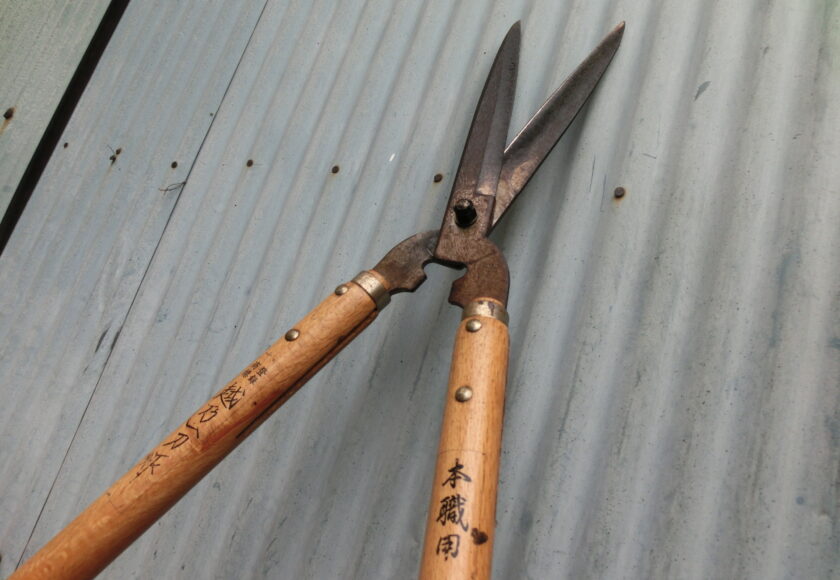
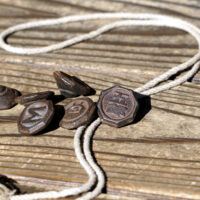
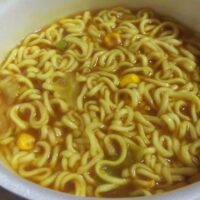
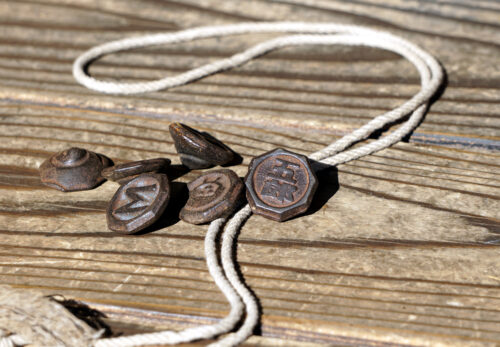

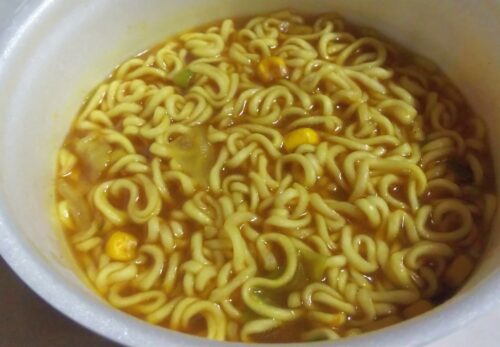



No comments yet.